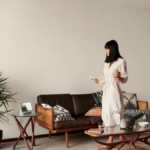
Lack of lighting is one of the biggest issues during video chats. Most of the times we need to switch on multiple lights to correct lighting. In a bid to address this problem, Google is offering a low-light mode on its Duo chatting app.
The low-light mode automatically detects low lighting and adjusts the picture so that the face is visible. Google says that this feature will also help users save electricity and is useful in regions plagued by frequent power outage.
Low light mode helps people connect with each other face to face, even when the lighting conditions aren’t optimal. The video call will adjust so people in the frame are more visible when the phone detects dim lighting. Low light mode will start rolling out globally to iOS and Android users this week.
The low light feature can be toggled on/off in the menu. Google doesn’t seem to be using screen brightness to illuminate the face. Moreover, the company has not revealed details about how the new low light mode works. The before and after pictures published by Google show a drastic change in illumination and overall visibility.
This makes us wonder, is low light mode similar to the Night Sight mode on Pixel phones. The Night Sight adapts to your environment, spends more time capturing light and minimizes noise. Furthermore, the feature works by capturing a burst of photos that are merged to create a bright and sharp photo. It will be interesting to see how well Google Duo’s low light mode work in a dark environment. Is it as good as Google claims it to be? Well, the question can only be answered after Google rolls out the feature.
[via TheKeyword ]





